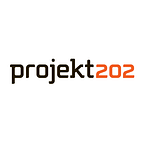Customer Insights in the Age of Social Distancing
How do you gain customer insights when you need to stay six feet away?
Originally published April 29, 2020 on UX Collective
Vice President of Customer Experience
projekt202
How do you get the context of employees, customers, or buyers when you can’t meet them in-person for a contextual inquiry, follow-me-home, interview, or other means of user research?
Getting out of the office is still the best and most recommended way of gaining insights. However, strategy, research, and user experience teams have always had a large set of tools and methods, many of which can still be used even today with social distancing.
We know people are complex. This is why teams need a mix of methods to uncover powerful insights and findings that ultimately are used to drive business and product strategy. Many teams — maybe without you even knowing — have conducted countless hours of remote methods for a variety of reasons. These experienced teams have built in reliable ways of getting as much context as possible in a number of different situations; arguably, there has never been a better time for remote research with the amount of mature tools available today.
And why could this actually be more beneficial now than before COVID-19?
- Many organizations’ employees have been forced to stay home. While some people are busier than ever, others have more time than usual. What better time for some remote interviews or validation testing? Maybe you’re working on a new retail point-of-sale? Or trying to map out the employee journey? Same for customers at home.
- Insights are especially important when culture shifts. And we’re in a large shift right now. How will customers shop in the near term for products and services? Is your organization prepared?
- It’s been proven that companies that invest in downturns do better. You want to continue your momentum in product and service development.
So now that the “get out of the office” mantra is slightly modified to something more like “get into their home (virtually),” how do you do that?
Here’s a list of some methods and tools to get you started:
DIGITAL ETHNOGRAPHIES
Virtual Visits
Example Tools: Apple FaceTime or Google Duo
Remote Interviews
Example Tools:
Remote Design Thinking Workshops
or Remote Design Sprints
Example Tools:
Moderated and Unmoderated User/Validation
or Usability Testing
Example Tools:
Digital Diary Studies (Video and Photos)
Example Tools:
Remote Card Sorts and Tree Tests
Example Tools: https://www.optimalworkshop.com
Surveys
Example Tools: https://www.surveymonkey.com
In the end, it’s not the tools that make the difference, it’s the same skill sets your teams have today around eliciting insights from users and collecting enough data to create opportunities that can be used for prioritizing investments and roadmaps while guiding user experience teams in designs.
If your organization has been afraid to get out of the office (we see this all too often), virtual does add a bit of a safety blanket for teams new to gathering field data.
Joining someone on Zoom is probably easier and less stressful than the more valuable contextual inquiry where you’re in someone’s home, but it can get teams comfortable with the ideas and concepts around field research. Maybe if you start virtual, your team will be so excited with the results they’ll jump at the chance once we can get closer than six feet from one another.
Just because it’s hard doesn’t mean you shouldn’t do it. In fact, if it is difficult, it’s probably something you should be doing. Learning shouldn’t stop just because your users are at arms’ length. Continue to push for improved customer understanding — show your teams it can be done and the value it (and you) provides.
